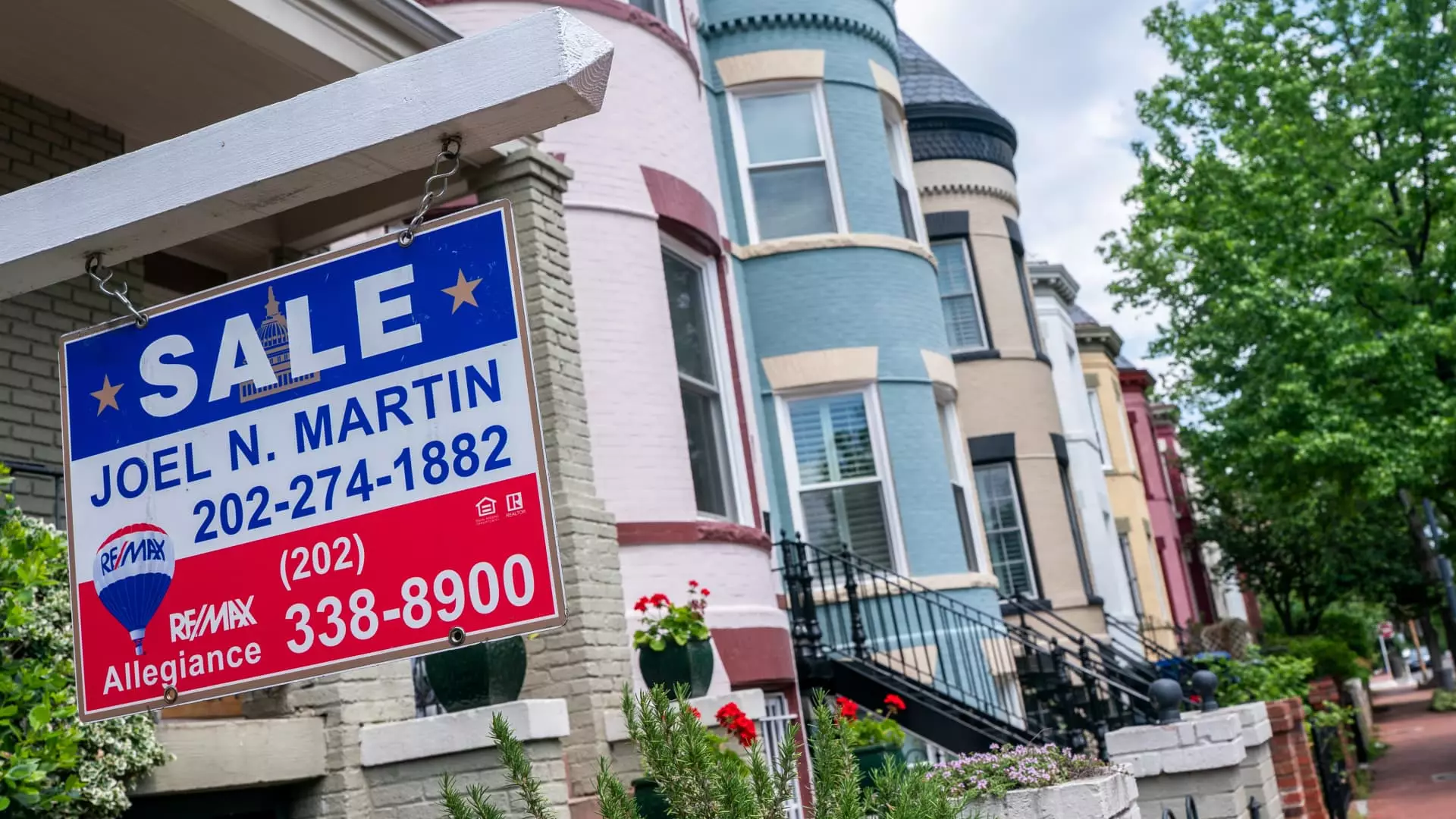The spring housing market is showcasing a troubling trend: real estate, often viewed as a stable investment, is now resembling a treacherous gamble. Sales of previously owned homes plummeted by 0.5% from March, reaching an annualized rate of just 4 million units in April, a stark reminder of past economic turmoil, as it mirrors the slow pace of 2009. It’s increasingly clear that the combination of elevated interest rates and waning consumer confidence is stifling what should be a vibrant season for real estate transactions. Instead of expected growth—analysts predicted a 2.7% rise—sales have instead dipped by 2% year-over-year, sending a loud signal that the market is in peril.
The reality is even more disheartening when we acknowledge that this downturn isn’t merely a fluke. “Home sales have been at 75% of normal or pre-pandemic activity for the past three years,” remarks Lawrence Yun, the chief economist at the National Association of Realtors. Despite the introduction of seven million jobs into the economy, the pent-up demand for housing is manifesting more as frustration than fulfillment. The anticipated relief often touted by policymakers—a reduction in mortgage rates—seems like a far-fetched dream, instead of the much-needed solution that should revive this stagnant market.
Inventory vs. Prices: A Complex Equation
Interestingly, while sales are stalling, there’s a significant uptick in housing inventory, which shot up by 9% month-over-month and surged nearly 21% year-over-year, totaling 1.45 million homes for sale by the end of April. This burgeoning supply is poised to recalibrate the market dynamics. Despite reaching a 4.4-month supply—the highest level in five years—this figure is still below the six-month benchmark that defines a balanced market. Last year, the supply of homes was a mere 3.5-months.
Yet, it’s crucial to dissect what this inventory growth means. Although rising supply often cools prices, the current median price of existing homes sold in April still stands at a staggering $414,000, marking an increase of 1.8% from the previous year— an unsettling sign of slow appreciation when juxtaposed against last year’s robust growth. Regions in the South and West are experiencing declines in prices, suggesting a more complex narrative at play where sellers are beginning to feel the weight of reality; the competition is intensifying, and buyers are increasingly empowered to negotiate more favorable terms.
The Impact on First-Time Buyers and Market Dynamics
The prospect for first-time homebuyers remains a mixed bag. They represented 34% of the sales, similar to previous years, indicating that this crucial demographic is still active. Yet, the increasing cancellation rates—now hitting 7% of sales—point to a growing disillusionment. As the affordability crisis persists alongside these rising interest rates, many prospective homeowners are reconsidering their options, aware that the market’s upward trajectory is not guaranteed.
Interestingly, while the lower price ranges are faltering, homes priced over $1 million saw nearly a 6% increase in sales compared to last year. This skew toward higher-end properties, however, isn’t necessarily a sign of bold consumer confidence, but rather a reflection of how the affluent are less adversely affected by economic downturns, thanks to their financial buffers. The shift in momentum at this tier raises questions about market sustainability, especially as stock market fluctuations begin to ripple into the real estate realm.
In an environment where affordability continues to dwindle, the contrast between end-market segments becomes more pronounced. It’s an encouraging yet troubling outcome that highlights systemic inequalities and wealth disparities, creating a lopsided housing market ripe for upheaval. The fact that economically favored segments are faring better while the low-to-mid tier decays only underscores the urgency of addressing these imbalances.
In sum, the housing market amid these prevailing economic pressures is revealing deep fractures. As the struggle against high interest rates and low consumer optimism lingers, the pain felt by everyday homebuyers contrasts starkly with the relative stability experienced by the wealthier segments. These diverging paths in the housing sector signal a need for policy reevaluation and a more targeted approach to support those increasingly shut out of the dream of homeownership. The implications of this growing divide extend beyond personal finance; they threaten to unravel the very fabric of our communities.



Leave a Reply